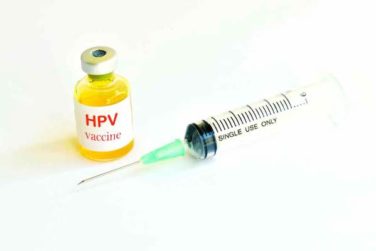The clinical management of transgender and gender nonconforming youth is a growing area in pediatric endocrinology and adolescent medicine with multiple questions and challenges. One of the many challenges relates to the decision-making process for transitioning to the self-identified gender. Many medical and ethical aspects surround this issue. What are the risks in delaying transition until adulthood? Can clinicians correctly diagnose gender dysphoria in childhood and adolescence? Are children and adolescents capable of making life-changing decisions? What are the long-term psychological and medical consequences of puberty suppression and cross-sex hormones? Each of these questions may pose a conundrum for patients, families, and clinicians to consider.
What are the risks of delaying transition until adulthood?
Available studies report the incidence of mental health problems among transgender and gender nonconforming youth are higher than the incidence in cisgender youth.1 This is especially true if they are unable to live as the gender with which they identify. de Vries et al. showed that transgender adults going through transition had worse baseline mental health problems than did transgender adolescents going through transition.2 This makes sense, as transgender adults are less likely to have been living as their gender identity, compared with transgender adolescents. This exposes them to longer periods of gender dysphoria and to harassment and discrimination. There are medical risks as well. Some surgical procedures are much more difficult to perform on a fully mature adult. For example, breast removal surgery for a transmale who has fully developed breasts may result in significant scarring, which could have been avoided if the surgery was done when the patient was younger with smaller breasts.3 Furthermore, the secondary sex characteristics that develop during puberty can be much more difficult to remove in adulthood. These characteristics may result in an appearance that can provoke abuse and harassment. Patients can avoid this by the use of hormone blockers at an early age, which would prevent the development of the undesired secondary sex characteristics.
Can gender dysphoria be diagnosed at an early age?
Because of the risks associated with pubertal suppression and cross-sex hormones, there is a concern about making the right diagnosis. Past studies have reported that among children exhibiting gender dysphoria, about 10%-25% will continue to have gender dysphoria after the onset of puberty.4,5 Because of this low rate of children with persistent gender dysphoria, many feel that making the diagnosis at such a young age, especially if the diagnosis is incorrect, will put them through unnecessary risks.
One potential treatment for some prepubertal children with gender dysphoria is social transition; for example, using the preferred name and pronouns, change of clothing and hairstyle, and so on. This is reversible; however, there are no studies documenting the psychosocial outcomes of children whose gender dysphoria desists in adolescence. Furthermore, the use of pubertal blockers does not begin until the patient reaches Tanner Stage 2,6,7 and the use of cross-sex hormones typically does not begin until age 16 years old. This allows time for the child to work with a mental health therapist to confirm their gender identity. Finally, children who have gender dysphoria beginning at puberty or persisting after puberty generally have persistent gender dysphoria in adulthood.3
What are the medical risks with pubertal suppression and cross-sex hormones?
One of the risks for puberty suppression with a gonadotropin-releasing hormone agonist (GnRHa) – such as leuprolide – is reduced bone mineral density (BMD).7 Most bone accretion occurs during adolescence and cannot be recovered in adulthood. There are no studies on how GnRHa may affect BMD in transgender children and adolescents. The best evidence comes from GnRHa treatment of central precocious puberty in children, which has mixed results. Some studies show that GnRHa may lead to lower BMD,8 whereas other studies showed no difference in BMD between those treated with GnRHa versus those who were not,9,10 especially after resumption of puberty.
What are the medical risks of using cross-sex hormones?
Likewise, use of cross-sex hormones – like estrogen and testosterone – is not risk free. The most likely risks with estrogen are venous thromboembolic events including pulmonary emboli, blood clots, gallstones, elevated liver enzymes, weight gain, and high cholesterol. Polycythemia, weight gain, acne, male pattern baldness, and sleep apnea are risks associated with testosterone use.7 Additionally, use of these hormones can induce infertility, and this is not always reversible.6 Furthermore, there are some studies in animal and human models that highlight the importance of sex hormones in organizing the brain during the critical period of adolescence.11 There is some concern that pubertal suppression or the use of cross-sex hormones for transition during this time may disrupt this process. However, one prospective study showed that adolescents who received pubertal suppression and cross-sex hormones had no psychopathology as adults and even had improved mental health outcomes.12 Nevertheless, this is only one study and further studies should confirm that pubertal suppression and sex reassignment are beneficial to the patient.
Can children and adolescents make complex, life-changing decisions?
The ethical issues of managing gender dysphoria in children and adolescents are the avoidance of harm – in both treatment and delaying treatment until the patient is older – and determining if children and adolescents are capable of making important decisions. Many would argue that children are not capable of making complex, life-changing decisions. For example, we wouldn’t expect an 8-year-old recently diagnosed with cancer to decide whether to proceed with treatment, knowing the potential side effects. Nevertheless, the recommended treatment for children is social transition. This process is reversible with little psychological and medical consequences.
However, adolescence can cloud the issue. Depending on the state, teenagers can obtain care for sexually transmitted infections (STIs) and contraception services without parental consent. Prevention of the spread of STIs and unwanted pregnancy are the primary rationales behind this, as adolescents are less likely to obtain these services if doing so required parental consent.13 However, underlying this rationale is the belief that adolescents are capable of making some complex decisions. Although the treatment of STIs or preventing unwanted pregnancy is not as complex as pubertal suppression or use of cross-sex hormones, the consequences of foregoing medical care of STIs (for example, the possibility of infertility due to pelvic inflammatory disease) or unexpected pregnancy are also life-changing.
One also must remember that not all adolescents reach their developmental milestones at the same age. A 14-year-old may have cognitive and executive functioning advanced for their age whereas an 18-year-old may lack these skills. Because of this variation, an interdisciplinary team including clinicians and behavioral/mental health experts should help individuals through the process of characterizing their self-identified gender identity and support their eventual transition using, as indicated for each individual, pubertal suppression, cross-sex hormones, and, ultimately, surgery.
The treatment of gender dysphoria in children and adolescents is characterized by ethical, medical, and psychosocial dilemmas. Long-term data are not available to determine the optimal age for transition for each individual. Despite the long-term risks, some children and adolescents are capable of making some important decisions. Furthermore, some treatment recommendations for children and adolescents who have gender dysphoria are reversible. At the end of the day, clinicians must combine the limited evidence with their experience to make the best judgment on how to proceed. Most important of all, they should allow the child to lead because he/she is the best judge of his/her gender identity.
References:
1. Institute of Medicine (U.S.) Committee on Lesbian, Gay, Bisexual, and Transgender Health Issues and Research Gaps and Opportunities. The Health of Lesbian, Gay, Bisexual, and Transgender People: Building a Foundation for Better Understanding . (Washington, D.C.: National Academies Press, 2011).
2. Psychiatry Res. 2011 Apr 30;186(2-3):414-8 .
3. Nat Rev Endocrinol. 2011 May 17;7(8):466-72 .
4. Dev Psychol. 2008 Jan;44(1):34-45 .
5. J Adolesc Health. 2015 Oct;57(4):367-73.
6. J Clin Endocrinol Metab. 2009 Sep;94(9):3132-54 .
8. J Clin Endocrinol Metab. 2008 Jan;93(1):190-5 .
9. J Clin Endocrinol Metab. 2010 Jan;95(1):109-17 .
10. Clinics (Sao Paulo). 2012;67(6):591-6 .
11. Front Neuroendocrinol. 2005 Oct-Dec;26(3-4):163-74 .
12. Pediatrics. 2014 Oct;134(4):696-704 .
13. Arch Pediatr Adolesc Med. 2000;154(9):885-92 .
Dr. Montano is an adolescent medicine fellow at Children’s Hospital of Pittsburgh of UPMC and a postdoctoral fellow in the department of pediatrics at the University of Pittsburgh. Email him at pdnews@frontlinemedcom.com .





